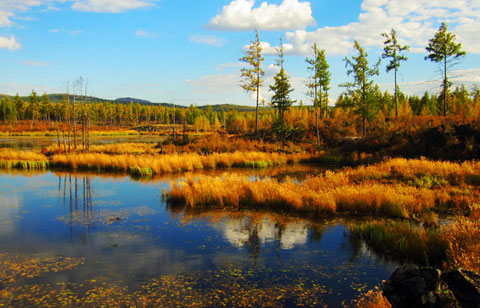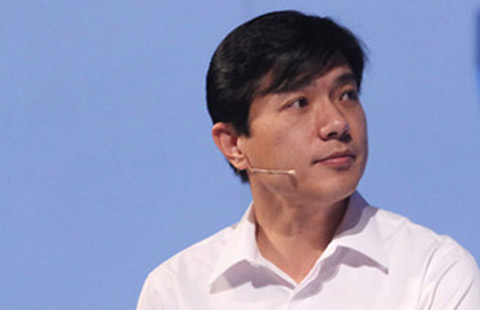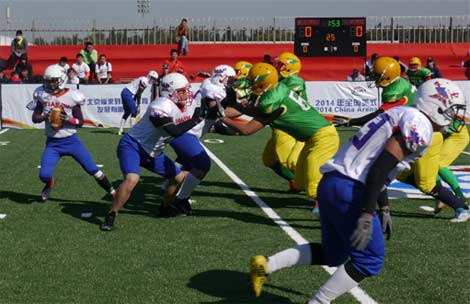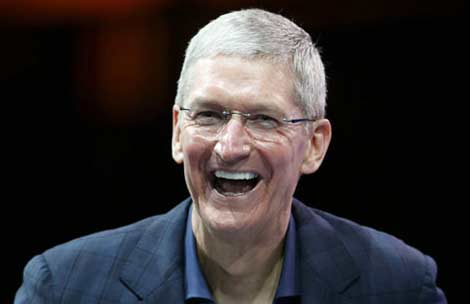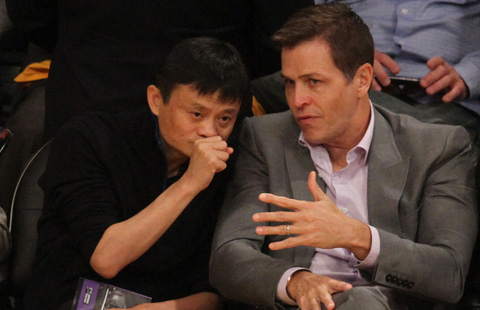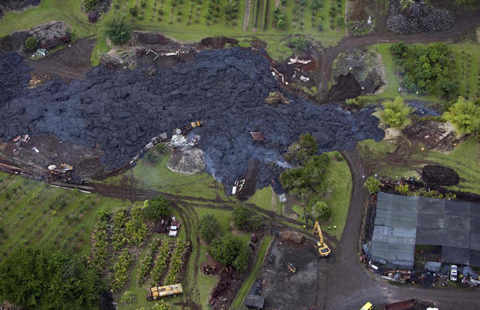Rich pay sky-high prices for meteorites
Updated: 2014-10-31 08:41
By Tom Hancock in Urumqi Agence France-Presse(China Daily)
|
||||||||
|
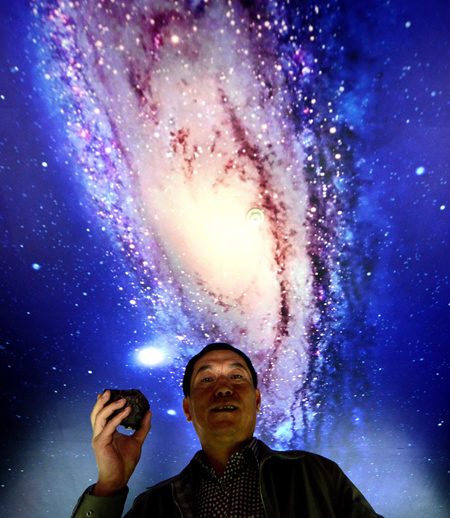 |
| This picture taken on Sept 19, 2014 shows Tong Xianping holding a piece of meteorite at his showroom in Urumqi, in China's far-western Xinjiang region. [Photo/Agencies] |
Tong Xianping is among the Chinese entrepreneurs paying astronomical prices and making an impact in one of the world's more arcane markets.
He spent 1 million yuan ($163,000) on a chunk of the iron-packed Seymchan, pieces of which were first found in a Russian riverbed in 1967 and are believed to be billions of years old.
"It was worth it," said Tong, 50, admiring the 176-kilogram mass, which calls to mind an inflated lump of coal. "They are news from space."
Tong keeps dozens of specimens under spotlights at his exhibition space in Urumqi, capital of the Xinjiang Uygur autonomous region.
They include a knobbly brown rock that was part of Gibeon, a meteorite that crashed in prehistoric southern Africa. It also cost around 1 million yuan, Tong said.
From a safe, he pulled out carbonaceous chondrites he scooped from the sands himself - ancient chunks resembling the nebula that produced the planets of the solar system.
"These are very complete fragments, and hard to find," he said.
Flashy purchases have made China's newly wealthy a subject of envy and ridicule.
"Company founders and bosses like big meteorites," said Tong, who made his money dealing in jade.
In close orbit of the safe lounged two fellow collectors, sipping a luxury brand of green tea.
"If there are good meteorites, rare ones, I'm willing to spend a lot," said one of the pair, an executive surnamed Liu whose firm has won construction contracts on Urumqi's first subway line.
Tong is happy to be called one of the nouveau riche, he said, although he dismissed earthly possessions: "Cars are manufactured, but there can only be one of each meteorite."
FEARS OF FAKES
Scholars study the rocks for clues to the origins of the solar system, and some believe they seeded Earth with organic molecules that enabled life to form.
Tong's own passion for interplanetary matter is facilitated by a global market with roots in remote deserts and polar regions, where the fallen extraterrestrial bodies are most easily spotted.
Top specimens fetch hundreds of thousands of dollars at auction, but unlike paleontologists and archaeologists, who decry looting on their sites, experts in the field welcome the trade.
"We have a cooperative relationship with the collectors," said Monica Grady, a leading meteorite scientist at Britain's Open University. "We can't afford to go out and collect, but this small army of dealers will do it."
Finders depend on academics to accredit the specimens so that they have value on the market, while at the same time the scientists keep a chunk for themselves, she added. But the wave of Chinese buyers has sent prices skyward and raised fears of forgeries among some veteran collectors.
"They are just interested in how much they are worth, they don't understand the science behind them," said Bryan Lee, a Chinese civil servant who scopes out specimens at the world's largest meteorite trade show, in the US desert city of Tuscon, Arizona.
"It's led to an increase in fakes," he added.
Most Viewed
Editor's Picks

|

|

|

|

|

|
Today's Top News
US experts hope China joins trade partnership
WB report ranks China on business-friendly rules
Consensus sought with US on governance of Internet
China to join pro football wars
Halloween haunts China as popularity grows
Mixed bag for China as US Fed ends QE stimulus
Apple's Tim Cook says 'proud to be gay'
Conference conducive to building consensus on Afghanistan
US Weekly

|

|
